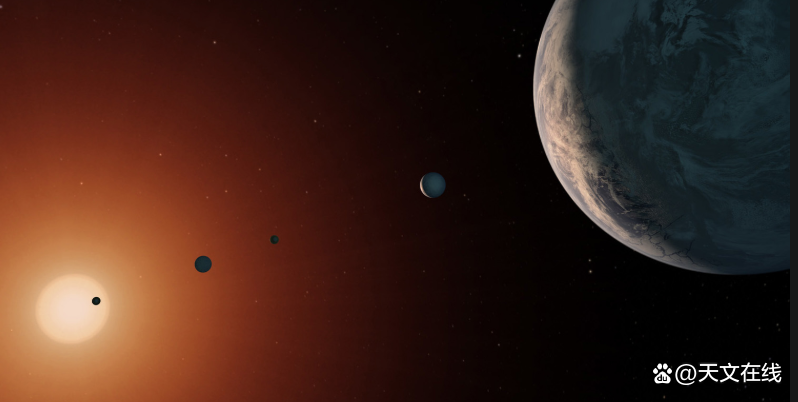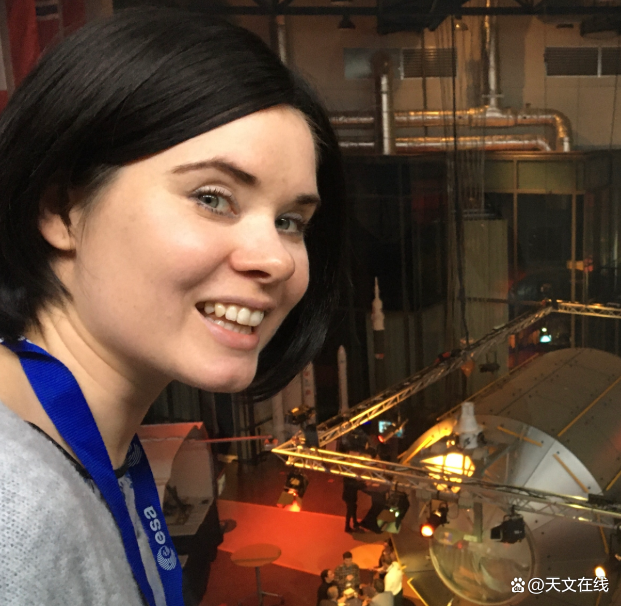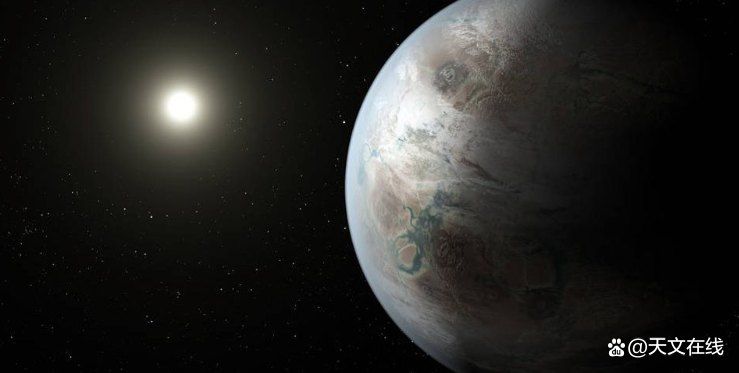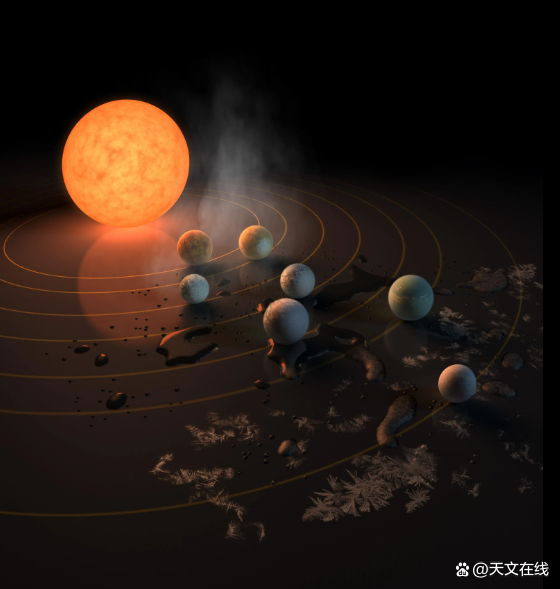Resonance running, signs of life, and trapist-1 in trappist 1?
Author:Astronomy online Time:2022.07.10
Aquarius red dwarf "Trappist-1" leads the "mini solar system" -masis may have life in the 7-series planets?
Studies have shown that the trapist-1 solar system did not be bombed by space rocks like early Earth.
The huge space rock will make the planets of the Trappist-1 system lose synchronization.

Seven-class planets formed the Trappist-solar system. (Picture source: NASA/JPL-CALTECH)
If it was not because of the scientific interest of the seven planets of Trappist-1, it would be a trivial star.
Astronomers first discovered some new worlds in 2016, at least three of them were livable. Now, a new study shows that the track operation method of Trappist-1 planet may reveal their evolution clues and the frequency of space rock impact during the formation period.

TRAPPIST-1, located in the mid-to-sunlight of the water bottle, is called a red dwarf, which is a dark star and the most common type in our galaxy.
Around this star, there are seven earth-sized exogenous planets. According to the distance between them and stars, they are named by the simple letters from Trappist-to H to H. They run by astronomers as "resonance". Resonance means that although the time required for each planet to complete a track is different, each pair will meet again on the same point.

For example, the recent Trappist-1b planet of the star is 8 laps, C planets will drive 5 laps, D planets are 4 laps, E planets are around 2 laps. In a new study, scientists believe that the original star tray was surrounding the newly formed Trappist-star 7 billion years ago. If these planets were hit by too many space rocks in the original star disk, then this kind of kind Regular track movements will not occur.
"We find that after these planets are formed, they will not be bombed by too much material." Sean Raymond, the main author of the study of the University of Bordeaux and the main author of the study, Zhong pointed out: "This is very cool. When we consider other aspects of planets in the system, this is very interesting information."

The team of researchers in the United States and European researchers simulated the evolution of the Trappist-1 system on the computer. Scientists are trying to find out how many "things" will hit these planets before their synchronous track rules are disrupted.
Raymond said: "We can't say how many things have hit these planets, but because of this special resonance structure, we can set the upper limit of it. We can say," it cannot be more than this'. Facts. Prove that this upper limit is actually quite low. "
In the statement, scientists say that the model shows that the planets in the Trappist-1 system must be formed early and fast, which is about one-tenth of the time for formation of the earth.

When the original star tray around Trappist-1 disappears, these planets are already running close to their mother stars. Scientists believe that there are only millions of years after the formation of new stars full of gas and dust. Researchers say that the computer model shows that the gravity of this disc has sucked planets into the track resonance. The impact of a large celestial body is similar to a impact that intersects the earth in a collision of the moon about 4.5 billion years ago, which will definitely destroy this synchronous track movement.
Scientists hope to understand the intensity of space rock bombardment in the early stages of planet life to help them understand the chemical composition of the planet. In terms of the earth, many chemical elements, including water given to life -are considered to be introduced by impacting comets, asteroids and meteorites. As far as it is concerned, the impact of the moon is considered to provide most of the current carbon and nitrogen of the earth, and both are necessary prerequisites for life existence.
At present, scientists know very little about the chemical composition of the Trappist-World-1 world. Understanding the number of space rocks that hit them may improve these estimates.

"We still have some restrictions on the composition of these planets today, such as how much water they have," said Andre Izigolo, a celestial physicist at the University of Houston Rice University and the co -author of the paper. "But we have a big error line."
However, these planets may have been formed by substances containing more hydrogen, and they naturally have more water than the earth, even without all these comets and space rocks.
"For example, if one of the planets have a lot of water, for example, the mass score is 20%, then the water must be absorbed and merged into the planet in the early stage of the gas phase," said Izigoo. "So you must understand what the process can bring this water to this planet."

At present, the tools that can help scientists go farther. However, the new observatory, such as the James Weber Space Telescope, which is planned to run in 2022, and the most powerful space telescope ever, and the oversized telescope completed in the Southern Observatory in Europe in 2024 may solve various problems in all aspects.
"For the Trappist-1 system, Rajdeep Dasgupta, a co-author of the papers, said:" For the Trappist-1 system, we have these early-formation of earth quality planets.They may have some hydrogen from the beginning and have never experienced huge impacts. This may change many evolution inside the planet: deflation, volatile losses, and other things that affect livable. "In thisAt the end of the puzzle, scientists are expected to know whether there may be life on the distant earth.
By: Tereza Pultarova
Fy: Xiaoxiao
If there is related content infringement, please contact the author to delete after the work is released
Reprinted, please obtain authorization, and pay attention to maintaining integrity and indicating the source
- END -
Provincial Party Representative Hu Min: The "good home" of the community masses

The Twelfth Congress of the Communist Party of China Hubei Province was held. Repr...
Skill it!Feng Binshi Championship Women's Team picking gold

On July 20th, in the women's iron cake finals in the Oregon Track and Field World ...